|
HOME: www.hiltonpond.org |
|||
THIS WEEK at HILTON POND Subscribe for free to our award-winning nature newsletter (Back to Preceding Week; on to Next Week) |
LATE AUGUST WALKABOUT A few curmudgeonly types have written to say they are "tired" of hearing about hummingbirds at Hilton Pond Center and want to read more about the rest of our Piedmont birds and bees and flowers and trees. Their comments, of course, were mainly tongue-in-cheek--after all, more than 2,000 people viewed last week's photo essay on "The Truth About Ruby-throats"--but were still a nice reminder there is indeed a lot of OTHER stuff going on in the natural world at this time of year. To satisfy those folks' need for knowledge about critters and phenomena other than Ruby-throated Hummingbirds, we went out on our trails this week to see what we could find. As expected, we witnessed plenty of cool things during our "late August walkabout."
All text, maps, charts & photos © Hilton Pond Center We hadn't even stepped off the front porch of the old farmhouse at Hilton Pond Center when early morning sunrise fell on something deserving a closer look. Glistening in the solar rays was the three-foot wide self-spun web of an Orb-weaving Spider, complete with two silken mummies spinning on silken strands. These were hapless insects that undoubtedly got snared overnight and were consigned to the spider's pantry. Meanwhile, the spider herself was oblivious to the presence of our camera and 100mm macro lens, mostly because she was dining on an even newer morsel--a diurnal, freshly caught, tightly wrapped Yellowjacket wasp (above) whose potent stinger was no match for the spider's sticky web and poisonous fangs. Final score in this battle between predator and prey: Arachnids 1, Vespids 0.
All text, maps, charts & photos © Hilton Pond Center To be honest, our morning trek was no idle walkabout; we had a few goals in mind. After watching the ravenous spider for a while we headed out the driveway and down the paved road that fronts the Center's property. A few days previous we had come across a four-foot-tall herbaceous plant we wanted to photograph where it grew on the grassy sun-drenched shoulder. We had recognized it immediately as Evening Primrose, Oenothera biennis (above), AKA Sundrop--a North American native wildflower that often grows in open spaces just like this. We've seen this species many times before in several eastern states, but our solitary plant was the first-ever for Hilton Pond Center. Whence it came we have no idea; Evening Primrose's cylindrical pods (at right in photo above) produce a plethora of tiny brown seeds so small they can be blown by wind, so that's of little help in determining origin--especially when those seeds are known to stay viable in the soil for up to 70 years!
All text, maps, charts & photos © Hilton Pond Center As its name suggests, one-inch yellow flowers of Evening Primrose open quickly in very late afternoon and--except on cloudy days--close shortly after dawn. This frustrates any photographer like yours truly who prefers to use available light; our two photos show morning flowers already closed. Even though the image above is of a spent blossom, one can see the four-pronged pistil that suggests this is a a plant whose flowers are four-parted; indeed, there are also four petals, four sepals, and four stamens. Since Evening Primrose is open at night one might suppose it is pollinated primarily by moths, and this does seem to be the case. However, even a closed flower has a lemony scent and may still contain nectar, so it's not uncommon to see daytime visitors such as Honeybees, Bumblebees, and Ruby-throated Hummingbirds probing for sweets. (Oops, there we go mentioning hummers again.) The leaves of Evening Primrose provide fodder for caterpillars of several butterflies and moths, while American Goldfinches eat from freshly opened pods that have not yet dispersed their seeds.
All text, maps, charts & photos © Hilton Pond Center Growing right beside the Evening Primrose was another native plant with which we were all-too-familiar: Common Ragweed (above). A member of the Asteraceae (Composite or Sunflower Family), this is a stealth plant whose hardly noticeable flowers drop dusty wind-borne pollen that is the true culprit in fall "hay fever." Unfortunately, sticky-pollen Goldenrod (Solidago spp.)--which we consider one of the grandest of American wildflowers--is much more conspicuous beginning in late August and gets the rap each autumn for sniffles and sneezes. As shown in the photo above, Common Ragweed seems to be a favored host plant for larval sap-sucking spittlebugs whose bubbly white homes are often attached to ragweed stems. We wish there were more spittlebugs.
Common Ragweed has a genus name we consider to be a botanical cruelty joke: Ambrosia, the "food of the gods." Its species name artemisiifolia comes from Artemis, the Greek goddess of the hunt, whose quiver held arrows with points shaped like ragweed's leaf. Every ragweed plant produces at least one tier of flowers, and each flower (above) makes dozens of pollen grains, so it's no wonder people who have pollen allergies are affected by such prolific pollen production in this native North American plant. Oddly, several ragweed species have been introduced accidentally (we hope) to the Old World--a sort of payback for the likes of Kudzu, Japanese Honeysuckle, Purple Loosestrife, and Multiflora Rose.
All text, maps, charts & photos © Hilton Pond Center After photographing the roadside Ragweed and Evening Primrose and tending to a little nose-wiping (ah-achoo!) we entered a stretch of the Center's woods, taking a trail that led to another plant of interest. This time it was a foot-tall herb we had discovered a few days previous. We had been stumped by its I.D.--although distinctive branching suggested it probably was a member of the Apiaceae (Parsley Family) that includes the much larger and showier Queen Anne's Lace. After consulting with all-wise Google for far too long by inputting various combinations of the words "small, bristle, seed, spiny, three leaflets, Piedmont, Carolina, etc.", we finally came up with a possible solution: Canadian Black Snakeroot, Sanicula canadensis. The on-line photos, however, showed seed heads not with bristles but with tiny Velcro-like hooks, so when we went back to photograph we sought a more detailed view.
All text, maps, charts & photos © Hilton Pond Center Sure enough, when magnified via the macro lens we saw the seed heads DID bear many little hooks (above), confirming our Internet-aided identification: Canadian Black Snakeroot it was. (NOTE: This species should not be confused with Black Snakeroot, Actaea racemosa, AKA Black Cohosh.) This plant--our second new species just this week for the Center's herbaceous plant checklist--has inconspicuous late spring flowers. These are greenish-white and hermaphroditic, giving rise in late summer to distinctive quarter-inch seed heads whose many tiny hooks are just right for grabbing fur of mammals such as Eastern Cottontails or even much smaller White-footed Mice. Each bur contains two seeds that, if transported to appropriate mesic substrates, germinate and develop into biennial plants that grow to heights of 54". Snakeroot's genus name Sanicula is derived from the Latin word sanare, which means "to heal." In fact, Native Americans used Canadian Black Snakeroot to treat such diverse maladies as heart conditions, menstrual difficulties, and rattlesnake bites.
All text, maps, charts & photos © Hilton Pond Center Not far from the snakeroot on a back corner of the Center's 11-acre reserve grows a towering deciduous tree that at this time of year litters the forest floor with its fruit (above). Scattered among pine needles and decomposing leaves are the unmistakable products of Pignut Hickory, Carya glabra, supposedly named because in cross-section the tree's nuts resemble a pig's snout. (We don't see it.) Other authorities claim the common epithet comes from the relative inedibility of a nut that was simply thrown to the hogs as winter feed, but we've often wondered if the name didn't derive somewhat scatologically from the shape of the husk (example at center in the photo above). Most Pignut Hickory nuts on our big tree appear to be attacked by various weevils or other boring insects that prevent the fruit from ripening; others are damaged prematurely by squirrels (see gnaw marks in photo). Those that do manage to mature become favored food for Eastern Chipmunks, Wild Turkeys, Raccoons, foxes, and rabbits--plus any small rodent with persistence and sharp enough incisors to get through the thick, hard shell.
All text, maps, charts & photos © Hilton Pond Center As we continued along the trail on our late August walkabout we encountered one of Hilton Pond Center's many examples of the cycle of life--and death. This time, down close to the pond edge, it was the ten-inch-long empty shell (above) of a Yellowbelly Slider, Trachemys scripta scripta, our most common turtle at the Center. The shell apparently had been there for a while, hidden beneath leaf litter, and was beginning to fall apart at the sutures of the bones that comprise it. The scales of the carapace were also flaking off, revealing corresponding white bony plates beneath. We could find no sign of injury--no holes or abnormal fractures in the shell--so we imagine this medium-sized individual simply came ashore and expired for some unknown reason. As we were back in the office working with our image we noticed something interesting near the top of the photo; ironically, it was a different sort of shelled creature--a very-much-alive helical land snail with eye-stalks extended as it slid across the turtle artifact.
All text, maps, charts & photos © Hilton Pond Center Not far from the turtle shell we found the remains (above) of a second organism scattered on a mossy section of the trail. Since it was very close to water's edge we first thought this was a long-dead fish, but upon looking at the large number of vertebrae and curved rib bones we realized it was actually from a three-foot-long snake.
All text, maps, charts & photos © Hilton Pond Center Our serpent identification was confirmed when we looked at several fragments of cellophane-like material (above) scattered among the bones. These were pieces of snake skin nearly as impervious to decay as the scales we found flaking from the turtle shell. The ones at bottom center are actually belly scutes, those wide flat scales on a snake's ventral side used to move along when not sidewinding. Attached to the scutes but harder to see were several diamond-shaped scales that covered the snake's sides and dorsum. Again, we found no clues to explain cause of death. The skeleton was missing a head and had been picked clean, but if we had to guess we'd say it was a water snake that had turned into lunch for one of Hilton Pond Center's resident Red-shouldered Hawks. (Note: If you look carefully in the extreme lower right hand corner of our snake skeleton photo you'll see an inch-long millipede cruising through on its "thousand legs." These little arthropods have been very plentiful at the Center this year and fortunately are completely harmless detritivores--subsisting mostly on dead plant matter.)
All text, maps, charts & photos © Hilton Pond Center Having perambulated the perimeter of Hilton Pond itself we returned to the old farmhouse for a few final photos of a cluster of plants in a drainage ditch not far from our upper gate. Glowing brilliant orange-red in the sunlight, this was a native wildflower whose name is half-wrong. Call it "Butterfly Weed" if you must; it does attract butterflies, but it's certainly no weed and deserves a better handle. How about Butterfly Nirvana? After all, this plant--Asclepias tuberosa--is one of those important milkweeds whose nectar satisfies the taste buds of Monarch butterflies and whose leaves provide forage for the Monarch's ravenous larvae.
All text, maps, charts & photos © Hilton Pond Center While we watched and photographed the Butterfly Weed, various bees, flies, and wasps visited to sample the plant's copious nectar, and several pale yellow Cloudless Sulphur butterflies, Phoebis sennae (above), frustrated us with their unwillingness to sit long enough in the right position for an elegant portrait. Incidentally, we usually associate flowering Butterfly Weed with mid-June, so it was a bit surprising to have one in full bloom in late August here in the Carolina Piedmont. The bad news is that 15 minutes after we photographed the milkweed cluster a highway department mower came through to cut the shoulder. (Don't you think he could have raised the blades just enough to miss the Butterfly Weed?) So that does it for Hilton Pond Center's late August walkabout report, designed to provide a fix for folks "tired" of reading about Ruby-throated Hummingbirds. We think we did pretty well, mentioning hummers only once above while discussing predator-prey relationships, describing two plant species new to the Center's checklist, pointing out problematic Common Ragweed, analyzing the deaths of two reptiles, and showing an example of a colorful roadside plant pollinated by butterflies. But wait! Just as we were putting together this photo essay about our late August walkabout, something very important happened.
All text, maps, charts & photos © Hilton Pond Center On 28 August we got up early and, as usual, opened our six Dawkins-style hummingbird traps baited with sugar water and hung them from shepherd's crooks that guard the old farmhouse. Then it happened. At 7:46 a.m. we looked at a trap dangling just off our newly refurbished observation deck and saw a hummingbird hovering inside. Hurrying down the back steps we rushed to the trap, partially covered the opening with one hand, and gently reached inside to remove the hummer. Turns out there was nothing morphologically unusual about the bird (above)--she was an average-looking immature female that hatched out this summer somewhere in North America--but what set her apart from her conspecifics was that when we finished applying #H81031 to her right leg she became the 5,000th Ruby-throated Hummingbird banded at Hilton Pond Center since 1984! By any measure, 5,000 hummingbirds is a LOT of birds--we joke it's about a shoe box full of these tiny balls of fluff--so we're hopeful everyone out there will share our excitement and forgive us for mentioning hummers one more time in a photo essay about our "Late August Walkabout." All text, maps, charts & photos © Hilton Pond Center
All contributions are tax-deductible on your |
|---|
Hilton Pond Center for Piedmont Natural History and Operation RubyThroat: The Hummingbird Project are now registered as an organization/project eligible to receive donations amounting to 0.5% of each and every Amazon purchase you make through AmazonSmile. We know many of you are frequent Amazon customers, so it's merely a matter of placing your orders through AmazonSmile after designating Hilton Pond Center as your desired recipient. You might not think 0.5% is much of a donation, but that's 50 cents on every $100 you spend; it doesn't cost you a penny and those donations can really add up. Please click below and begin helping Hilton Pond Center and Operation RubyThroat in this nearly effortless way. Don't forget: Your purchases need to be made via AmazonSmile.com rather than Amazon.com. Same company, just a different route for donations. |
|
"This Week at Hilton Pond" is written and photographed by Dr. Bill Hilton Jr., executive director of Hilton Pond Center for Piedmont Natural History.
|
|
|
Please refer "This Week at Hilton Pond" to others by clicking on this button: |
Comments or questions about this week's installment? Send an E-mail to INFO. (Be sure to scroll down for a tally of birds banded/recaptured during the period, plus other nature notes.) |


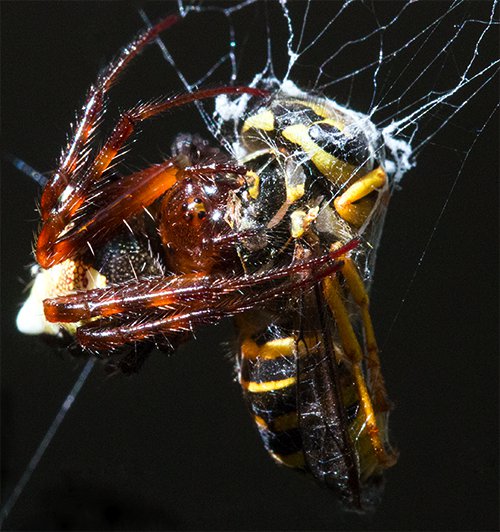
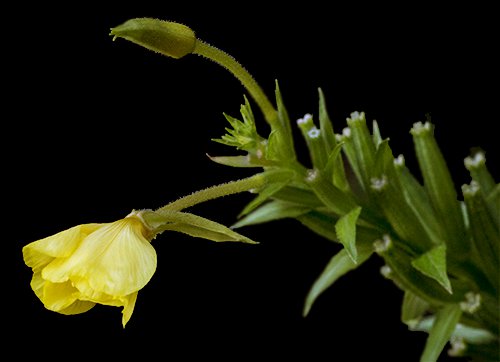
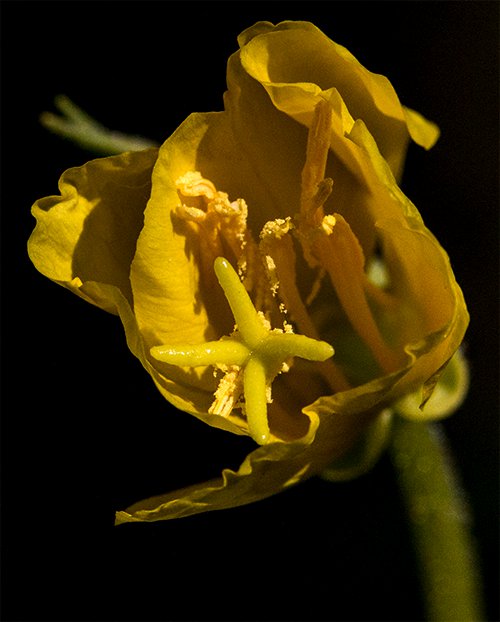
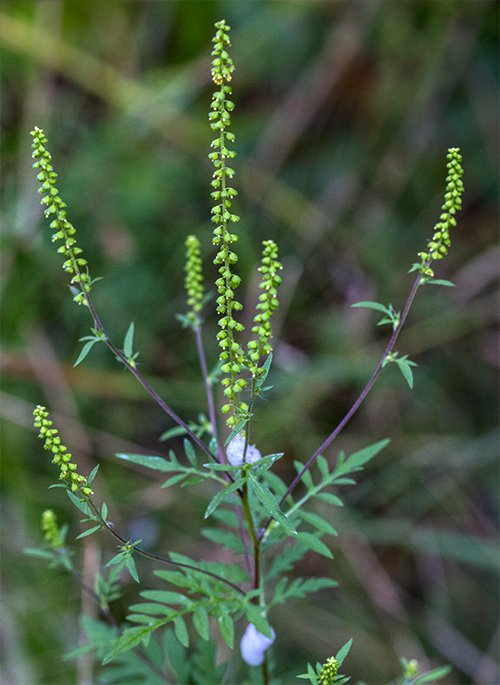
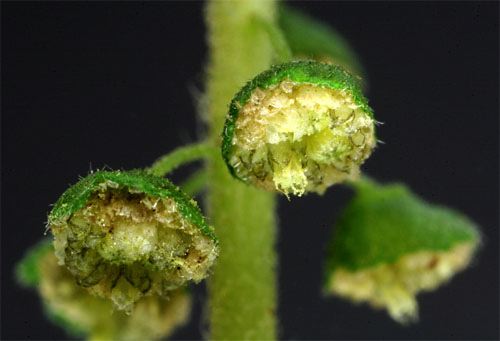
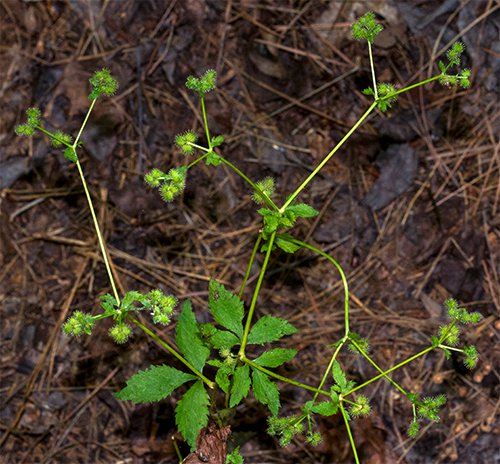

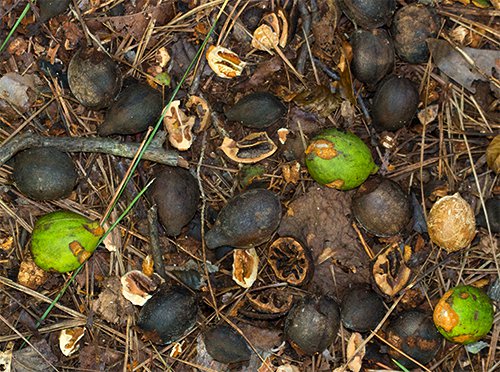
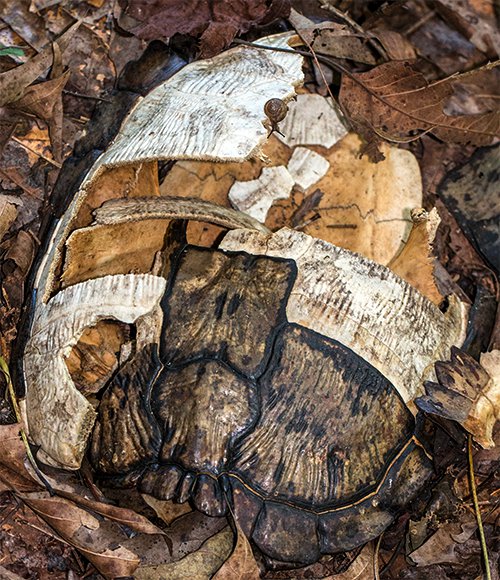
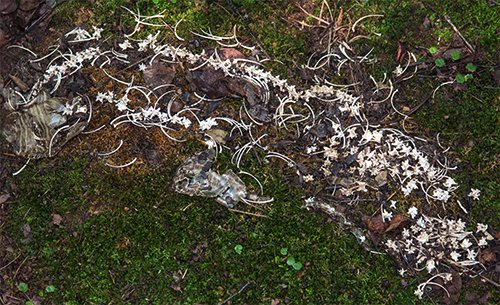

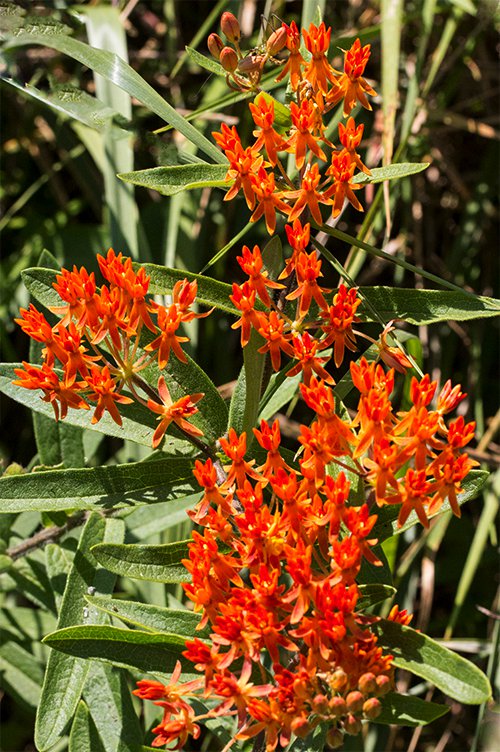
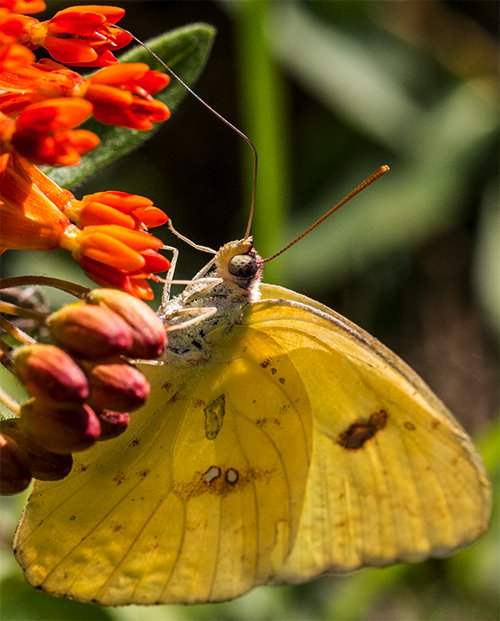

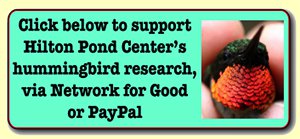







 Please report your
Please report your